#Bahá'í Faith
Text

6 notes
·
View notes
Text
So powerful is the light of unity that it can illuminate the whole earth.
— Baha'u'llah
#life quotes#lifequotes#light#quote#quote of the day#quoteoftheday#quotes#wisdom#unity#Baha'u'llah#bahai#Bahá'í Faith#oneness#wholeness#interbeing#nature#human nature#interconnectedness#light of unity#earth#illumination#enlightenment#power
5 notes
·
View notes
Text
US: Finally, after years of supporting the Bahá'í State of Iran and the Levant we have helped overthrow the Iranian government and replaced it with the radical Bahá'ís who won't do anything.
BSIL (pronounced basil): Saluton amikoj, we heard you were being racist so we are launching several missiles at you.
US: These guys are weird but at least they're zionists
BSIL: Saluton, after thousands of years we have located the verse about arson so we will be blowing up israel.
US: YOUR LITURGICAL LANGUAGES ARE PERSIAN AND ARABIC WHY ARE YOU DOING THIS
#BSIL#Bahá'í Faith#linguistics#linguistic#languages#shitpost#linguist shitpost#lingblr#conlang#conlanging#constructed language#conlangs#esperanto#US#us politics#Israel#Palestine
14 notes
·
View notes
Note
"We must support the establishment of a single, democratic, secular state in all of historic Palestine"."Listen to Mokhiber's chilling words. Yes, Israel is engaged in an existential fight. At the U.N., there are human rights for everyone but Jews, who are supposed to lay down their arms in the face of a genocidal enemy currently enslaving their people. Mokhiber's phony ‘human rights’ cover is extremely disturbing. He says equality means 21 Arab states, 56 Islamic states and zero Jewish states.
you are so fucking stupid and i can tell this is coming from a place of deep rooted islamophobia. you are equating israel with judaism & equating arabs/muslims (which arent interchangeable) with "the enemy" without any ifs and buts, even though in the last few weeks countless people have explained why that is incorrect.
who is the genocidal enemy currently enslaving whose people? from what i've seen hamas has already released several israeli hostages, all of whom have shared their account of what happened and all of whom made a point to highlight the humanity they were treated with. hamas has offered to release all of the hostages, and israel has refused to accept them. meanwhile, israel has been detaining hundreds and hundreds of palestinians unprovoked, many of whom die without ever being freed. just the in the last few days israel has picked off palestinian civilians off the streets in the west bank. who is enslaving who? just yesterday israel killed more than 400 palestinian civilians in one go. who is committing genocide against who?
and to address your arab states and islamic states—not a single one of those states forbids a person of another faith from living amongst them. you people have such a problem with iran existing and having the sway that it does in the middle east, and even in iran there are non muslims living a normal life. in all of these arab and islamic countries, there are christians and bahá'í and hindus and sikhs and kurds and jews and people from so many other faiths. none of those countries is an ethnostate, which is what israel wants to be.
youre not going to come to me and cry about the UN not advocating for human rights for jews (which in this case means israel) when all they have fucking done is back israel instead of intervening with a stern hand to stop the annihilation of an entire people. maybe because the executive director of the united nations children's fund is married to the chairman of the blackrock investment. which is the largest fund manager for cluster munitions. as in... cluster bombs... which israel is known to use... but yeah sure the un is so totally not at all fully standing behind israel. stupid fuck
#get the fuck outta here. you mfs will not catch me turning on palestine by evoking false sympathy and vilifying arabs#palestine#anonymous#answered
12 notes
·
View notes
Text
Here's to religious systems! Your system might be connected to your religious practices, or they could just be meaningful to you! Either way, shoutout to:
Protestant and Catholic systems!
Jewish systems of all kinds!
Sunni and Shia Muslim systems, including hijabis!
Buddhist systems!
Hindu systems!
Sikh, Jainist, Shinto, and Taoist systems!
Wiccan, Pagan, and witchy systems!
Animist and druid systems!
Satanist systems!
Bahá'í and Druze systems!
Zoroastrian systems!
Those who practice traditional or Indigenous religions and spiritualities!
Interfaith systems!
Pantheist systems!
Systems who've gone through religious or spiritual trauma, but practice anyways!
And anyone else I might've missed!
You're all amazing! We love you so, so much! Your faith is incredible!
🖤💜💙💚💛
#I REALLY TRIED MY BEST please someone correct me if i did anything wrong#requests#multiplicity#plural#pluralgang#plural affirmations#actually multiple#actually plural#did#did osdd#osddid#plural community#plural system#plurality#plural positivity#plural pride#system community#system pride#system#sysblr
19 notes
·
View notes
Note
Catholicism invents new ways to feel bad about being human fr
Horrifying. This is a tangent but have you seen Bahá'í temples? I don't know much about that faith, either, but their temples look nice.
2 notes
·
View notes
Note
no pressure but what's it like being raised in the bahá'í faith? I've read a bit about it before and then just reread some stuff upon seeing ur tags and it actually speaks pretty well to how I describe my relationship with religion as a Catholic raised agnostic (I think that all religions hold potential truths and that there's not really a truly fully "correct" religion) so I'm curious what it's like to actually live with it/the practices & beliefs ^^
(heads up: this got a little long)
I'd imagine its quite similar to being raised in other beliefs--the beliefs themselves just vary.
For context, my family joined the baha'i faith when I was 5, and I stayed until I was 15--which is the official age you can decide for yourself, and I'd already figured out I was an atheist (though I never did the paperwork, so officially i'm still counted in the census). So I've got about 10 years experience in the faith, though I've never been a religious person
Like you said, the Baha'i faith thinks there is a truth to all religions. There's one God and every so often he sends a prophet to remind us of his teachings--Abraham, Mohammad, Jesus, etc. The most recent is Bahá’u’lláh, born about 200 years ago, which is who Baha'is follow now--and will until the next prophet.
The faith is huge on unity; it's like the core tenet. We are the fruits of one tree and the leaves of one branch, humanity is a collective so we should be uplifting and supporting everyone--including people we disagree with. Which meant it was a very kind and supportive environment focused on mutual aid and service. Trips to the food bank to volunteer, visits to each other when in need, that kind of thing
Like in other religions, we did things on Sundays, meeting at the Baha'i center. There we'd have the toddler's classes (up to age 5), children's classes (5-10), junior youth (11-15), and then the adult sessions (which I never went to myself); this way everything was in one building at the same time. So growing up that just meant I'd be busy Sunday mornings and had to plan around that.
Every 19 days would be a feast day, marking the start of another month (there are 19 months with 19 days each). These would typically be held at a member's house, and they'd house their sector. It's pot-luck style and there people would read prayers, listen to music, and talk about the value of the month (each month has a different value--we just ended Mulk/Dominion). Things like why it was important, in what ways, how to incorporate it into our lives for the next 19 days.
Also I should mention--the Baha'i community is rather small. The religion is only about 200 years old, so it's a rather close-knit community here. We were friends or at least friendly with practically everyone, and there were few kids, so we all knew each other and grew up kinda together.
Feast is held in the evening though, which means the most consistent attendees are the older people--parents with kids had to be conscious of bedtimes and whether it was a school night, so my family didn't attend all of them.
Then there'd be the Holy Days--Naw-Rúz (New Year), 1st, 9th, and 12th days of Ridván, the twins' (Bahá’u’lláh and the Báb) births and martyrdoms, etc. Then we'd all meet at the Baha'i Center in the evenings, where there'd be a program, music, praying, and then we'd go eat--which was also potluck, but on a bigger scale. The faith originated in Iran, so a good portion of the community is Persian and a lot of the food I grew up with there was, too.
I don't think this is too different from what other religions do, it's just the specific Holy Days and what/who we're remembering that's different.
What was different for me--and for a lot of non-christian/catholic raised kids was the constant underlying knowledge that you're different. You don't see your prayers, your symbols (nine pointed star is the main one), your holy figures, your practices anywhere. You make christmas crafts at school and think: this isn't actually my holiday, but here I am anyway. And there's this feeling of wanting to say something, to distinguish yourself because you know people are assuming you're christian/catholic otherwise. Because it's the default and you're an outlier.
I have never met a Baha'i person outside of the center, outside of the people I've known since I was 5. Nobody knows what the Baha'i faith is, what it's beliefs are. Everywhere I go it's with the knowledge there's a 99% chance I'm the only one in the room--and the thing is, I'm atheist. I don't believe in any god, and yet because the Baha'i faith is such a minority it's important for me to still maintain that connection that separates me from the assumptions people make. Every time it comes up, I'm already prepared to explain because I know no one else knows about it, so to be Baha'i or former Baha'i is to be an ambassador, a resource as much as I can be even with my limited experience--because it's also not a closed religion. They love to spread the teachings and get people attending. One of the times my family hosted feast my friends who lived down the street came and we competed to see who could say the most prayers (though stuff to do with budget and that kind of thing is a little more for members only)
I'm kinda jumping around to think of other info, apologies. There's a daily prayer facing Bahá’u’lláh's shrine once you're a Youth (above 15), and that's also when you start participating in the fast. During the month (19 days) of Ala, you don't eat from sunrise to sunset. There's also the pilgrimage to...Bahgdad? Haifa? No one in my family has taken it, so I can't remember the location off the top of my head, but the point is there are locations of importance (like shrines and temples) in that area of the world where Baha'is' goal is to visit at least once in their life. One of the other kids I knew did a year of service after high school and went on her pilgrimage before starting college.
This has gotten a little long so I'll wrap up here but that was generally what it was like/what was up. Very community and service focused, very warm and friendly. It just meant certain days I had things going on others didn't (attending the Naw-Rúz celebration that evening, for example), and that it was always something I knew was different about my life compared to the community I was in.
This answer feels quite scattered and eclectic, so if anyone has any follow up questions feel free to ask and I'll do my best to answer :)
#the baha'i faith#quil's queries#nonsie#i could tell you more about what we did in children's classes or share music or other things if you'd like#or share some of the writings/prayers and things like that#i am not the most knowledgeable former baha'i in the world because i was an atheist the whole time and didn't pay#as much attention as some of my peers#but. 10 years of weekly participation does leave me with SOMETHING#and I am more than willing to share for those who are interested
4 notes
·
View notes
Text
The Baháʼí Faith is a world religion that was founded in the 19th century Middle East. Its founders and the majority of its early followers were of Iranian heritage, and it is widely regarded as the second-largest religion in Iran after Islam. Though most Baháʼís in Iran are of a Muslim background, the 19th century conversions of sizeable numbers of individuals from Judaism and Zoroastrianism in the country are also well documented.
The early history of the Baháʼí Faith in Iran covers the lives of these founders, their families, and their earliest prominent followers known by honorific designations such as the Letters of the Living and the Apostles of Baháʼu'lláh.
Since its inception the Baháʼí Faith has promoted democratically elected councils; the promotion of modern education as a priority within families (with emphasis on female education) and specific encouragement of women's equality with men. Iranian Baháʼís have created schools, agricultural cooperatives, and medical clinics across the country for themselves and others. Iran is also where the greatest persecution of Baháʼís has taken place—including the denial of education, arbitrary arrest, and killing. Iran's long history of state-sponsored persecution against Bábís and Baháʼís is well documented. The website "Archives of Baháʼí Persecution in Iran" has compiled thousands of documents, reports, testimonials, photos, and videos revealing proof of efforts to suppress and eliminate Baháʼís, particularly since the Iranian revolution of 1979.

Gathering of youngsters on 13 August 1933 at Tehran's Tarbiyat Baháʼí school for girls. At least 47 such Baháʼí-operated schools were forcibly closed under the Pahlavi government in 1934.

Ten Bahá'í women imprisoned, tortured, and hanged for teaching children in Shiraz, Iran in 1983.
#Baha'i Faith#Iranian Baha'is#Baha'i Faith in Iran#Persecution of Baha'is in Iran#Iranian women#Iranian history#Baha'i history#religious persecution
10 notes
·
View notes
Photo
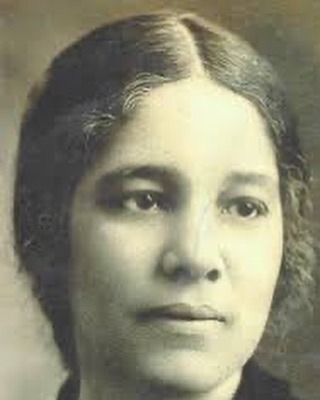
Beatrice Morrow Cannady (January 9, 1890 – August 19, 1974) was a renowned civil rights advocate in early 20th-century Oregon. She was editor of the Advocate, the state's largest African-American newspaper. She was co-founder and vice president of the Portland chapter of the NAACP in 1913, the organization marked the first such branch of the organization formed west of the Mississippi River. She was born in Littig, Texas in 1890. She was the second-oldest daughter of George Morrow and Mary Francis Carter Morrow, farmers who raised their children to value education. She graduated from Wiley College. She married Edward Daniel Cannady (1912-1930). He was the co-founder of The Advocate, one of Portland, first black-owned newspapers. She became associate editor of The Advocate. Her work through the newspaper drew attention to racial violence during the early 1920s and prompted a statement from Governor Ben W. Olcott decrying the actions of the Ku Klux Klan. Acting as the NAACP chapter's secretary, she worked with the group to remove racist, exclusionary language from Oregon's constitution, a mission that succeeded in 1926 and 1927 when the changes were ratified. She led protests against the Ku Klux Klan propaganda film The Birth of a Nation. Her involvement with the Bahá'í Faith can be dated to 1914/1915. She graduated from Northwestern College of Law, making her the first African American woman to graduate from law school in Oregon. She went on to become the first African American woman to practice law in Oregon. She was the first African American woman to run for state representative. She successfully advocated for the passage of civil rights bills by the Oregon state legislature. Her efforts helped integrate public schools in Longview, Washington, and Vernonia, Oregon. She represented Oregon at the 4th annual Pan-African Congress. She had two sons. She married Yancy Jerome Franklin (1931-1936), a typist at The Advocate. She left Oregon and moved to Los Angeles, she married Reuben Taylor. She worked for the Precinct Reporter, a Southern California newspaper that served the African American community. #africanhistory365 #africanexcellence https://www.instagram.com/p/CnMdQ-7LFsq/?igshid=NGJjMDIxMWI=
6 notes
·
View notes
Photo


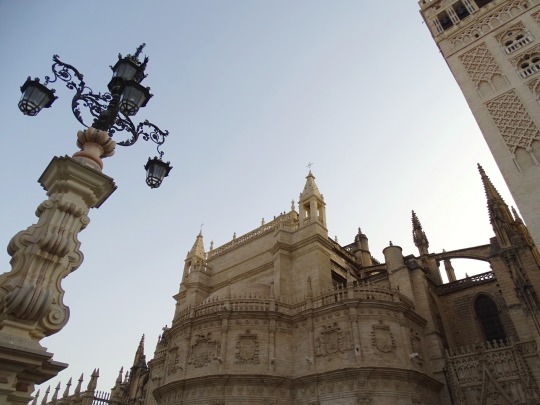
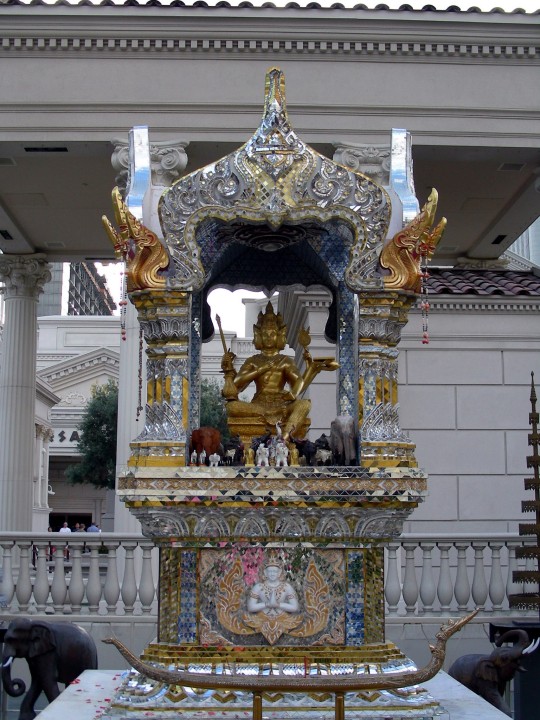
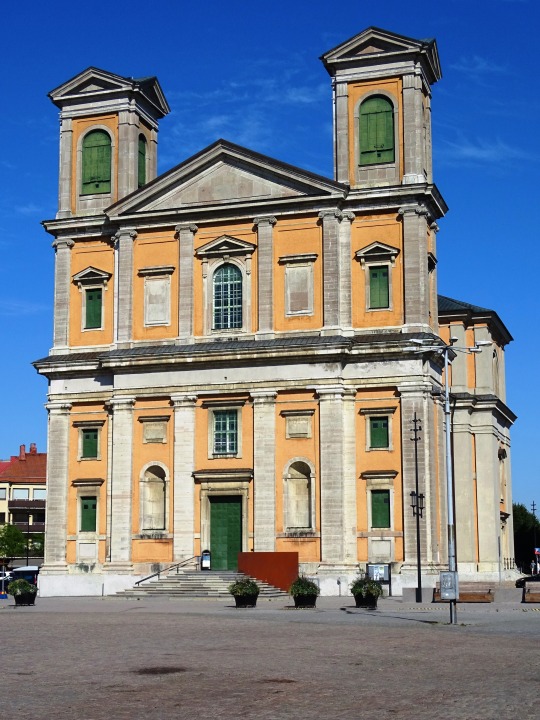


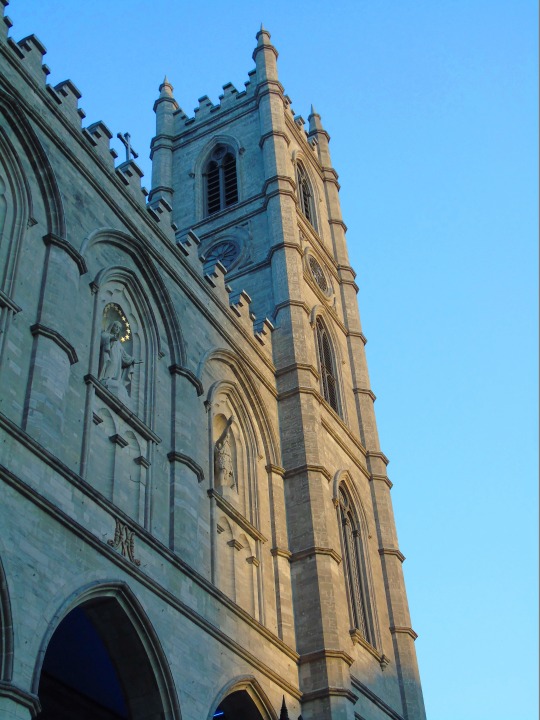
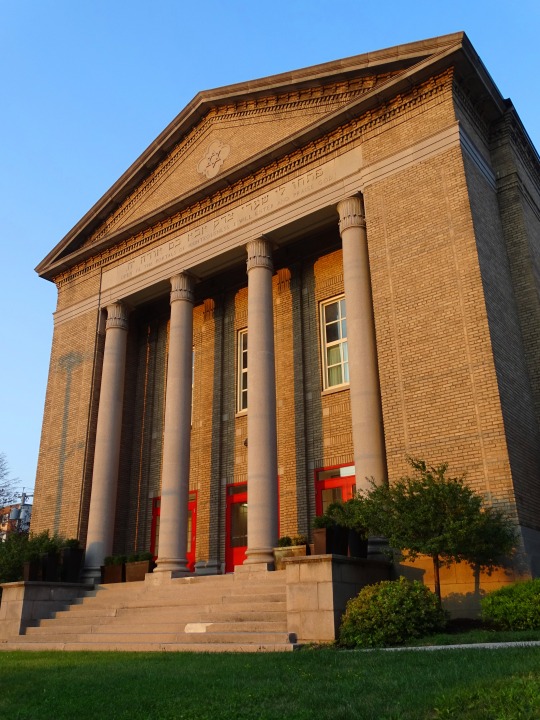

World Religion Day
World Religion Day is celebrated on the third Sunday in January every year, and is a reminder of the need for harmony and understanding between religions and faith systems. On this day, communities of different faiths have the opportunity to get together and listen to each other, as well as celebrate the differences and commonalities that the delicate intermingling of culture and religion brings. There are approximately 4,200 religions around the world. While many people live their lives without religion, faith in a higher being or power works for the majority of people. Whatever the reasons, we are all for the idea of people being unified despite differences, and celebrating them.
History of World Religion Day
The first official observance of World Religion Day (as it is known today), was in 1950, but the concept began a few years prior to that. In Portland, Maine, the National Spiritual Assembly of the Bahá’í Faith hosted a talk in Eastland Park Hotel in October 1947, culminating in the decision to observe an annual event, then known as World Peace Through World Religion. By 1949, the event began to be observed in other parts of the U.S. and grew more popular. By 1950, it came to be known as World Religion Day. On this day, at various different locations, many authors, educators, and philosophers are invited to speak on world religions and the importance of establishing and maintaining harmony between them. It’s a great forum for learning more about other religions and cultures too, and a chance to intermingle socially with people of different faiths and worldviews.
Since this concept was the brainchild of people from the Bahá’í Faith, it is worth exploring what this faith is and tracing its historical roots. As a religion, Bahá’í first emerged in Persia (modern-day Iran), in the 1800s. There are three core principles of this faith — unity of God, unity of religion, and unity of all mankind. It is a monotheistic faith, believing in a single god, and that the spiritual aspects of all religions in this world stem from this single god. Another central tenet is the belief in the innate equality of all human beings. Thus, all humans have the same rights and responsibilities. If you look at it, the Bahá’í Faith is an all-encompassing one that recognizes the commonalities between all religions, so Baháʼí believes that all faiths have common spiritual goals too, especially since religions are ever-evolving.
World Religion Day timeline
1800s The Baha`i Faith is Established
In Persia, around 1844, the Bahá'í Faith is established by a mix of people from Christian, Jewish, and Zoroastrian religious roots.
1949 World Peace Through World Religion
The first event takes place in Portland, Maine, to establish the foundation of World Religion Day.
1950 World Religion Day is First Observed
As World Peace Through World Religion begins to spread across the U.S., the celebration morphs into World Religion Day.
1957 Bahá'í Leadership Passes on to a Group
Rather than passing on from individual to individual, the death of Shoghi Effendi leads to the faith leadership passing to the Universal House of Justice.
World Religion Day FAQs
How many religions are there in the world?
Many scholars estimate that there are approximately 4,200 different active religions in the world today.
How many countries celebrate World Religion Day?
World Religion Day is currently celebrated in over 80 countries around the globe.
Which religion has the most adherents?
Christianity tops the list, with a whopping 2,3 billion. Next comes Islam with 1,8 billion. Third on the list are those unaffiliated with any particular religion, at 1,2 billion.
How to Observe World Religion Day
Attend an interfaith event
Engage with other religions
Try out a different religious experience
Many different organizations hold interfaith events on this day, where people can get together and hear about the beliefs and philosophies held by others of different faiths. These events are great spaces for eminent speakers, writers, and spiritual leaders to share openly about what they subscribe to, and why.
World Religion Day provides the perfect opportunity for people to step out of their individual bubbles and engage with the beliefs and spiritual ideologies of others. It’s about dialogue and the freedom to both express and listen; most importantly, it’s a time to learn from each other. This day reminds us that religion does not have to be a taboo subject, and everyone has a unique story to tell.
Religion is often inextricably linked with culture, so why not experience the best of both by attending a religious event of some sort, outside of your own? Whether it is going to a mosque or temple, or celebrating a religious festival you are not familiar with, it’s a great way to make inroads into different community groups and build relationships.
5 Facts About World Religions You May Not Know
You name it, there’s a patron saint for it
Wicca is not an ancient religion
Mormons have limited beverage options
The “Qur’an” mentions Jesus more than Muhammad
Hindus can also be atheists
In Catholicism, there is a patron saint for nearly everything, including coffee, beekeepers, and headaches.
Though it sounds like it would be ancient, considering its roots in European fertility cults, Wicca was introduced in the 1950s.
Mormons are forbidden from drinking beverages like tea, coffee, or alcohol; soda, however, seems to be okay.
Though this is not a popularity contest, the “Qur’an” apparently mentions Jesus Christ five times more than Muhammad.
While Hinduism is a polytheistic religion, it is also possible to be a practicing Hindu and an atheist — the moral and ethical code remains the same.
Why World Religion Day is Important
It purports to unite people
Interfaith harmony
A chance to experience something different
We love any day that seeks to bring people together, irrespective of differences, and this day fits the bill exactly. Whatever one’s religious beliefs and culture, the longing for acceptance and unity will be a fundamentally human one that unites us already.
World Religion Day offers people across the globe a chance to get to know others of different religions better, and seeks to foster a better understanding of religious differences through peaceful means such as dialogue.
The various interfaith and religious events organized by communities around the world are an exciting opportunity and opening for people to immerse themselves in spiritual experiences different from what they know. And so much of it is cultural that we see it as a win-win.
Source
#Seville Cathedral#Salt Lake Temple#Spain#Salt Lake City#Sweden#USA#Fredrikskyrkan Church#Karlskrona#original photography#architecture#cityscape#tourist attraction#landmark#Temple Emanu-El#Miami Beach#Temple Adath Yeshurun#Saint George Tropoforos Hellenic Orthodox Church#Syracuse#New York City#St. Patrick's Cathedral#Notre-Dame Basilica of Montréal#Amman#World Religion Day#15 January 2023#third Sunday in January
2 notes
·
View notes
Text
Places in Delhi to visit with family
There are a number of places in Delhi that are perfect for a family outing. Here are some of the most popular options:
1. The Red Fort: The Red Fort is one of the most popular tourist attractions in Delhi. It is a massive fort complex that was built by the Mughal Emperor Shah Jahan in the 17th century. The fort is made of red sandstone and is surrounded by a moat. It is a great place to explore with the family and learn about India's rich history.
2. The Qutub Minar: The Qutub Minar is another popular tourist attraction in Delhi. It is the tallest brick minaret in the world and was built in the 12th century. The minaret is surrounded by a number of other ancient buildings and monuments, making it a great place to explore with the family.
3. The Jama Masjid: The Jama Masjid is one of the largest mosques in India. It was built in the 17th century by the Mughal Emperor Shah Jahan. The mosque is a great place to visit with the family and learn about the Islamic religion.
4. The India Gate: The India Gate is a war memorial that was built in the early 20th century. It is a national monument of India and is a great place to visit with the family.
5. The Lotus Temple: The Lotus Temple is a Bahá'í house of worship that was built in the 20th century. It is a beautiful building that is surrounded by gardens. The temple is a great place to visit with the family and learn about the Bahá'í faith.
2 notes
·
View notes
Text
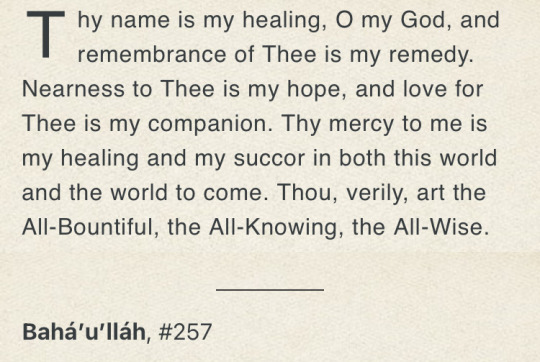
4 notes
·
View notes
Text
The welfare of any segment of humanity is inextricably bound up with the welfare of the whole. Humanity’s collective life suffers when any one group thinks of its own well-being in isolation from that of its neighbours or pursues economic gain without regard for how the natural environment, which provides sustenance for all, is affected.
— Universal House of Justice
#life quotes#lifequotes#light#quote#quote of the day#quoteoftheday#quotes#wisdom#Universal House of Justice#unity#Bahá'í Faith#humanity#human nature#human race#welfare#wellness#oneness#wholeness#interbeing#interconnectedness#collective life#collectivity#well-being#nature#environment#isolation#neighbours#neighbors#sustenance#economic gain
2 notes
·
View notes
Text
The three major Abrahamic faiths: Bahá'í; Samaritanism; and Druze
0 notes
Text
Top Places to Visit in Delhi: A Comprehensive Guide
Delhi, the vibrant capital of India, is a city that seamlessly blends the ancient with the modern. With its rich history, stunning architecture, and diverse culture, Delhi offers an array of attractions for every type of traveler. If you're planning a trip to this dynamic city, here's a guide to the top places to visit in Delhi.
1. Red Fort (Lal Qila)
The Red Fort, a UNESCO World Heritage Site, is one of the most iconic landmarks in Delhi. Built by the Mughal Emperor Shah Jahan in the 17th century, this imposing red sandstone fort is a testament to Mughal architecture. The fort houses several exquisite palaces, mosques, and gardens, including the Diwan-i-Aam (Hall of Public Audience) and Diwan-i-Khas (Hall of Private Audience). The grandeur of the Red Fort makes it a must-visit place in Delhi for history enthusiasts and architecture lovers alike.
2. India Gate
India Gate, an impressive war memorial located in the heart of New Delhi, is a symbol of national pride. Designed by Sir Edwin Lutyens, this 42-meter-tall arch commemorates the soldiers who died in World War I. The monument is surrounded by lush lawns and is a popular spot for evening strolls and picnics. The India Gate area also offers beautiful views of the Rajpath and nearby government buildings, making it one of the top places to visit in Delhi for a leisurely outing.
3. Qutub Minar
The Qutub Minar, another UNESCO World Heritage Site, stands as a marvel of Indo-Islamic architecture. This 73-meter-tall minaret, constructed by Qutb-ud-din Aibak in the 12th century, is adorned with intricate carvings and inscriptions. The Qutub Minar complex also includes the Quwwat-ul-Islam Mosque and the Iron Pillar of Delhi, renowned for its rust-resistant properties. As one of the historical highlights of Delhi, the Qutub Minar is a must-see for those interested in ancient history and architecture.
4. Humayun's Tomb
Humayun's Tomb, the final resting place of Mughal Emperor Humayun, is a beautiful example of Mughal garden tomb architecture. Built in the 16th century, this tomb is surrounded by meticulously landscaped gardens and features an elegant octagonal design. The tomb’s architectural style inspired the construction of the Taj Mahal. Visiting Humayun’s Tomb provides insight into Mughal architectural advancements and is one of the top places to visit in Delhi for history buffs.
5. Lotus Temple
The Lotus Temple, renowned for its lotus-shaped architecture, is a Bahá'í House of Worship in Delhi. Completed in 1986, this stunning temple is known for its serene ambiance and beautiful gardens. It is open to people of all faiths and promotes the message of unity and peace. The Lotus Temple is a tranquil retreat in the bustling city and offers a unique spiritual experience, making it one of the top places to visit in Delhi.
6. Akshardham Temple
Akshardham Temple is a modern architectural marvel that showcases Indian culture and spirituality. Inaugurated in 2005, the temple complex includes intricately carved mandapams, a grand central dome, and a beautiful water show. The temple’s exhibitions and cultural performances offer visitors a glimpse into India’s rich heritage. Akshardham Temple is a must-visit place in Delhi for anyone interested in exploring Indian culture and spirituality.
7. Chandni Chowk
For a taste of Old Delhi, head to Chandni Chowk. This bustling market area is famous for its vibrant street food, traditional shops, and historical sites. From sampling delectable street food like parathas and jalebis to exploring the narrow lanes and ancient havelis, Chandni Chowk offers an authentic experience of Delhi’s historical and culinary heritage.
Conclusion
Delhi is a city of contrasts, where history and modernity coexist harmoniously. Whether you’re exploring grand historical monuments, enjoying spiritual tranquility, or indulging in local cuisine, Delhi has something for everyone. These top places to visit in Delhi offer a glimpse into the city's diverse attractions and are sure to make your visit memorable.
1 note
·
View note
Text
Baha'ism: The Religion of Unity and World Peace

Baha'ism, one of the world's newest religions, was founded in the 19th century and is based on the belief in the essential unity of all religions and the promotion of global peace and social justice. Originating in Iran, Baha'ism is a faith that has attracted attention for its inclusive and progressive vision, seeking to unify humanity and promote spiritual and social development. This article explores the origins of Baha'ism, its fundamental principles, and its impact on the contemporary world.
The Origins of Baha'ism: The Emergence of a New Revelation
Baha'ism emerged in Iran (then Persia) in the 19th century with the emergence of the Báb, whose real name was Sayyid `Alí Muhammad Shírází. Born in 1819, the Báb proclaimed himself to be the harbinger of a new bearer of divine revelation, paving the way for a new cycle of spirituality. He announced the coming of a “Manifestation of God” who would establish a new global order.
In 1850, the Báb was executed by Persian authorities for his teachings, which he considered a threat to the religious and political status quo. His followers faced severe persecution, but his message influenced the founding of Bahá’ísm.
The Founder of Bahá’ísm: Bahá’u’lláh
Bahá’u’lláh, whose real name was Mírzá Ḥusayn-`Alí Núrí, is the founder of Bahá’ísm. Born in 1817, he was one of the earliest followers of the Báb and later claimed to be the Manifestation of God whom he had foretold. In 1863, Bahá’u’lláh revealed his mission as the prophet of a new religion and laid the foundations of Bahá’ísm.
Bahá'u'lláh's revelation emphasized the unity of all religions, the equality of all human beings, and the need for a unified world government to promote peace and justice. His writings, which include the Kitáb-i-Aqdas (The Most Holy Book), serve as the basis of Bahá'í law and practice.
Fundamental Principles of Bahá'íism
Bahá'ism is founded on several core principles that reflect its commitment to unity and justice. These principles include:
Unity of God: The belief that there is one God, who is the creator of all that exists. God is transcendent and incomprehensible, but His attributes are manifest in creation.
Unity of Religion: The idea that all the world's great religions are manifestations of a single divine truth, revealed by God through different prophets and founders throughout history. Bahá'ís believe that Moses, Jesus, Muhammad, Buddha, Krishna, and other prophets are part of a continuous divine revelation.
Unity of Humanity: The belief in the equality of all human beings, regardless of race, religion, gender, or nationality. Bahá'ís advocate the elimination of prejudice and the promotion of equality and social justice.
Unity of Religious Fundamentals: Bahá'ís emphasize the need for a single system of values and principles to guide individual and collective life. The practice of religion should contribute to the progress and well-being of society.
Universal Education: The promotion of education as a universal right and essential for personal and social development. Bahá'ís view education as a tool for promoting justice and equality.
World Peace and Global Governance: The belief in the need for a unified world government that promotes global peace, security, and well-being. Bahá'ís work to build structures of governance that transcend national and religious divisions.
The Structure of the Bahá’í Community
The Bahá’í community is uniquely organized, with an administrative system that reflects its principles of democracy and consultation. There is no clergy in Bahá’íism; instead, leadership is exercised through a system of elected councils:
Local Spiritual Assemblies: Elected by community members at the local level, they deal with spiritual and administrative matters of the local community.
National Spiritual Assemblies: Coordinate Bahá’í activities in a specific country and represent the national community.
The Universal House of Justice: The supreme governing body of the Bahá’í Faith, located in Haifa, Israel. The Universal House of Justice is responsible for guiding and coordinating the Bahá’í community globally.
Impact and Global Presence of Bahá’íism
Bahá’ism has a significant global presence, with communities established in virtually every country in the world. The religion is known for its commitment to social justice, the promotion of human rights, and building bridges between different communities and cultures.
In terms of social impact, Bahá'ís have been involved in a number of initiatives in community development, education, and peacemaking. Projects related to girls' education and community health are just a few examples of the work the Bahá'í community does globally.
In addition, Baha’ism promotes interfaith dialogue and cooperation, seeking to build a culture of mutual understanding and respect among different religious traditions. In many parts of the world, Baha’is are known for their work for peace and unity, often collaborating with other communities and organizations to promote social welfare and justice.
Challenges and Persecution
Although Baha’ism has contributed significantly to society in many areas, its followers have faced and continue to face challenges and persecution in some countries. In Iran, the origin of the religion, Baha’is have faced severe discrimination and repression since the movement’s inception. The Iranian government does not recognize the Baha’i Faith as a legitimate religion, and many Baha’is face difficulties such as lack of access to education and employment, as well as imprisonment and persecution.
The Future of Baha’i
As the world faces complex challenges such as religious conflict, social injustice, and economic inequality, Baha’i religion offers a message of hope and unity. With its principles of equality, justice, and peace, the religion continues to inspire its followers and positively influence communities around the world.
Baha’ism is also a religion of hope and vision for the future, promoting a global vision of unity and cooperation among all peoples. As the Baha’i community grows and spreads, its impact on the contemporary world can serve as a beacon for building a more just and unified society.
Baha’ism, with its message of unity and justice, represents hope for a more harmonious and collaborative future. With its innovative principles and commitment to global peace, Baha’ism continues to offer an inspiring vision for meeting the challenges of the modern world and promoting a world of equity and understanding.
0 notes